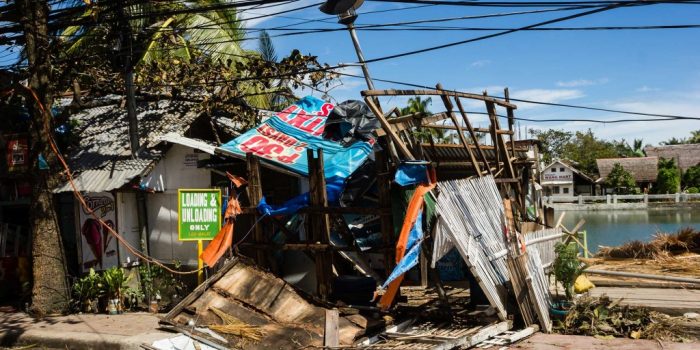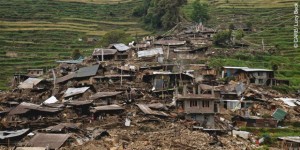Vulnerable Populations Needs Special Attention During Disasters
At Center for Disaster Philanthropy we pay special attention to the needs of vulnerable populations such as children, people with disabilities and the elderly, during disasters. They are often left out of preparedness plans and then suffer disproportionate harm during and after a disaster. That’s why I was pleased to participate in a panel hosted […]

At Center for Disaster Philanthropy we pay special attention to the needs of vulnerable populations such as children, people with disabilities and the elderly, during disasters. They are often left out of preparedness plans and then suffer disproportionate harm during and after a disaster. That’s why I was pleased to participate in a panel hosted by Save the Children Friday in New York to share my perspectives on disaster philanthropy.
Although I don’t have a transcript of the session, here is a rough approximation of two questions I was asked by moderator David Muir of ABC News, and my answers.
Muir: WHEN KATRINA HIT IN 2005, IT WAS A DISASTER LIKE NO OTHER IN THE U.S. LOOKING AT RESPONSE AMONG THE PUBLIC AND PRIVATE SECTORS, CAN YOU SHARE A BIT ABOUT YOUR EXPERIENCES AND OBSERVATIONS?
Ottenhoff: There’s always a little bit of distance in most disaster coverage. The disaster reports are often about somewhere far away. We think it can’t happen here. Or can’t happen to me. But Katrina received extensive media coverage from the beginning and we got a chance to be part of this drama in an intimate and personal way. The amount of destruction was shocking. The death toll was astounding. This was our country – one of the richest countries on earth. How could this be happening to us?
I think Katrina was a threshold event in a lot of ways:
- Katrina reminded us that disasters rip away the veneer that says everything is operating normally. We saw stories about children and families and the trauma they experienced losing loves ones, waiting on the roofs of their houses for rescue, their school and child care centers washed away. Children, it seems, are always most vulnerable in disasters. There was a lot of suffering during Katrina, but we also began to realize that there was a lot of suffering before Katrina as well.
- Katrina reminded us that we need to be mindful of the full arc of disaster relief. The recovery and response were indeed critical. But bringing these communities back to normal – maybe even better than they were before – has taken years. Recovery and rebuilding need to be part of our disaster planning too. And just think of how much better things would have been if there had been careful planning and preparation before Katrina.
- Finally, Katrina made us realize that we need to stop thinking of disasters as ad hoc events. They’re now part of our landscape and we need to consider them part of our lives. This requires more systematic planning and preparation, better coordination among donors and service providers, better capabilities among government and nonprofits, but most important a change in mindset. We can’t let this happen again, particularly to vulnerable populations.
Muir: OVER THE PAST 30 YEARS, THE NUMBER OF NATURAL DISASTERS IN THE U.S. AND AROUND THE WORLD HAS INCREASED THREE-FOLD, AND THE NUMBER OF PEOPLE AFFECTED HAS INCREASED FIVE-FOLD. HUMANITARIAN ORGANIZATIONS ARE ALL APPEALING TO DONORS TO SUPPORT THEIR EFFORTS. WE OFTEN HEAR ABOUT DONOR FATIGUE. IS THAT A REAL PROBLEM?
Ottenhoff: That’s probably one of the top questions I’m asked frequently by reporters.
Americans are incredibly generous and continue to give in astonishingly large amounts. Disasters are getting much more attention than they used to and people are highly motivated to take action. So I don’t see any signs of donor fatigue.But there are some things going on:
- Donors usually give immediately after disaster strikes and once media coverage is over donations quickly dry up. Relief and recovery are important, as I pointed out earlier. But we need to find ways to spread this money out to include planning and preparation and most importantly the long and difficult road of recovery and rebuilding.
- Donors are often confused when they give and have unrealistic expectations. Disasters often occur in complicated parts of the world and rebuilding is a complicated, pain-staking activity. Donors often don’t appreciate how much time it takes for a community to rebuild.
- There’s just enough media attention about those taking advantage of disasters to make many people uneasy about charitable contributions. Donors should take some time to be intentional in their giving and know to whom they are giving and what they want to be accomplished with their gift. It’s important for donors to know that there are solid organizations working in these areas, and who have extensive experience and strong capabilities and that their contributions are truly going toward helping people. In times of disaster I advise donors to support well known trusted nonprofits with experience in the affected area.
More like this

Life after a Super Typhoon

